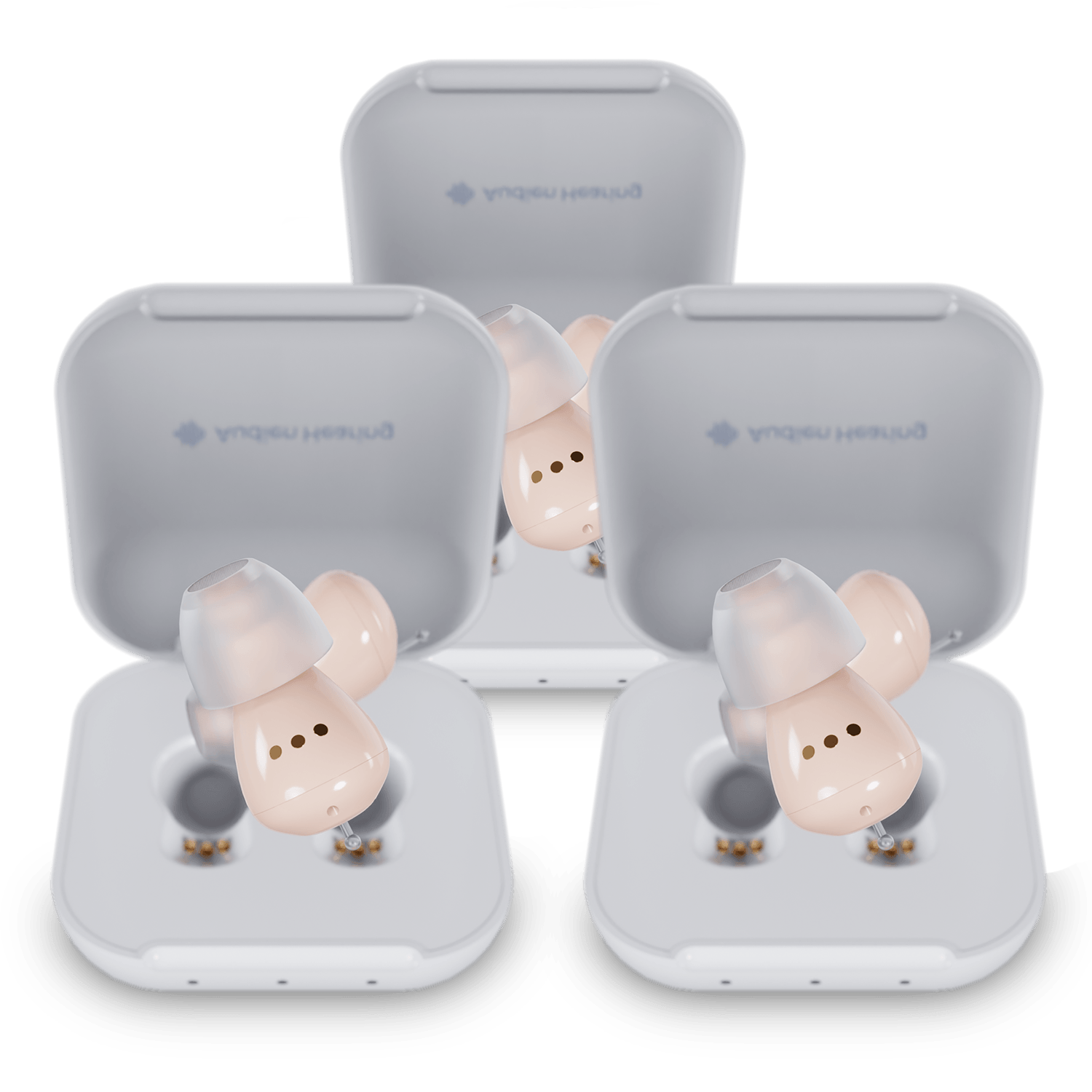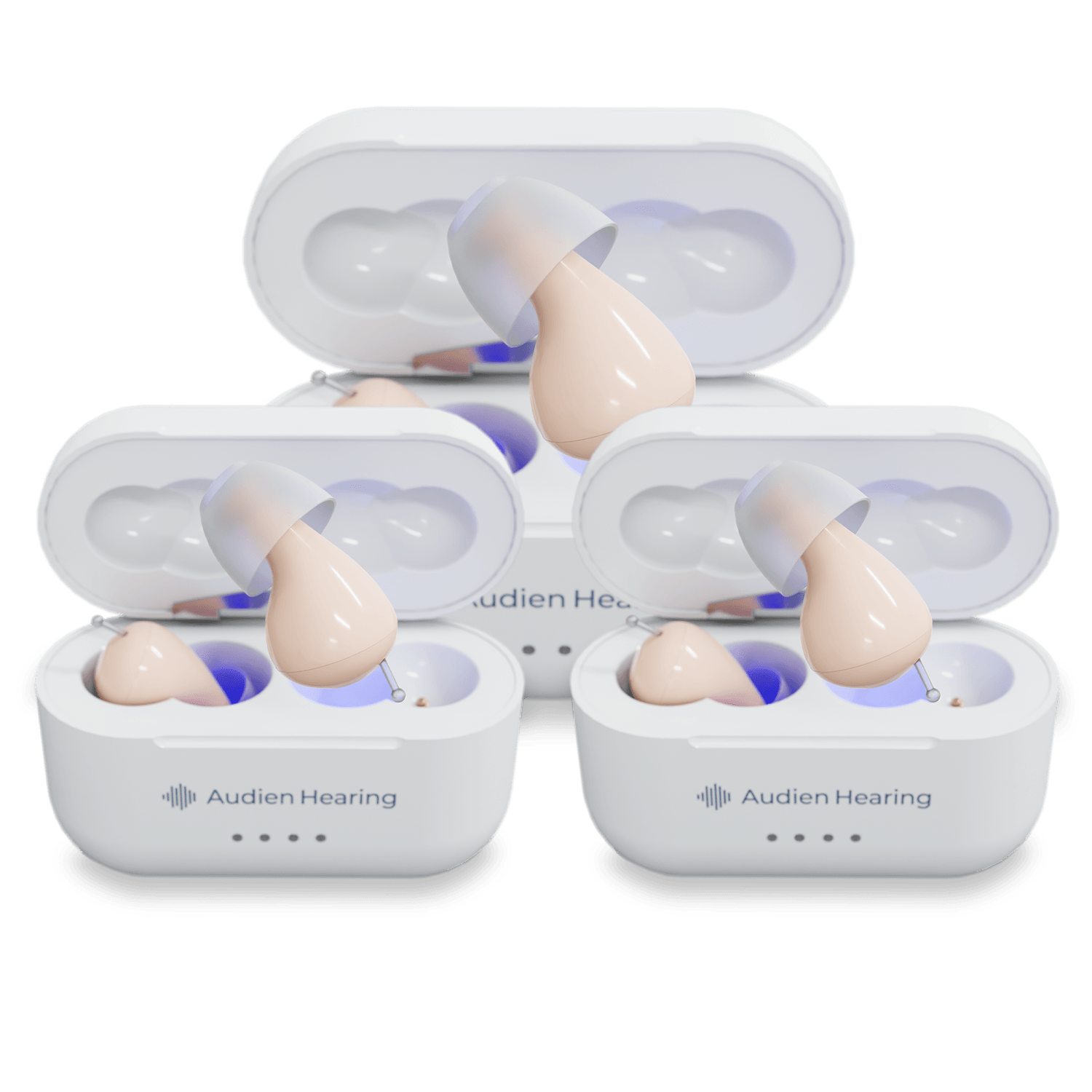There are seven different types of hearing tests. Each test varies in function and procedure to check for hearing loss. The tests that will work for you depend entirely on your personal hearing situation.
Pure tone testing, also known as pure tone audiometry, is one of the most common hearing tests. It is likely that you have already taken a pure tone hearing test in the past and it could possibly be one of the first tests ordered for you. Nevertheless, the phrase ‘hearing test’ can be intimidating if you’re not quite sure what to expect. So, in this article, we dive deeper into what exactly pure tone testing is and how it works.
What is Pure Tone Testing?

Pure tone testing is a type of air conduction test that determines the softest test tones you can hear at various frequencies and pitches. It presents tones across the speech spectrum (500 to 4,000 Hz) in order to determine if your hearing levels are within normal limits. This test can be subjective because it is a behavior-based test of the hearing threshold. Meaning, it relies on patient responses to pure tone stimuli. Therefore, it is not necessarily the most reliable test, as there can be human error involved if the patient does not follow the proper instructions. Which is why pure tone testing is only used on adults and children capable of cooperating with the test procedures.
How Does Pure Tone Testing Work?

Pure tone testing is simple and painless. You might remember a day where you had to get your hearing tested in school. You were likely taken to a quiet room, given headphones, and told to notify the person there if you heard any sounds. Well, not much has changed since then. You will be placed in a quiet environment and given headphones to wear. A hearing care professional will select pitches, from soft to loud, to be played into the headphones. Your job is to either raise your hand, push a button, or say ‘yes’ (the specific directions will be given to you by your doctor) after hearing each sound. If headphones cannot be worn for any reason, the sound will play from speakers inside of a sound booth instead and the same process notifying process will be followed. However, pure tone testing with speakers rather than headphones, otherwise known as ‘sound-field screening’, cannot test each ear independently. Thus, your results will be more beneficial if you are able to wear headphones.
What Will a Pure Tone Test Tell Me?

Getting a pure tone test will help your physician appropriately refer you to a hearing care specialist such as an audiologist-- a health care professional who is trained to evaluate hearing loss and related disorders-- or otolaryngologist -- a surgical eyes, ears, and throat specialist.
The results are recorded on an audiogram as a ‘pass’, for hearing levels within normal limits or a ‘refer’, for possible hearing loss and recommended repeat screening test and threshold test. The results will allow your doctor to determine the degree, type, and underlying cause of your hearing loss and thus provide a foundation for a diagnosis and treatment plan.
Conclusion

Pure tone testing is a simple and efficient way to examine what frequencies your ears can hear at different pitches. It is one of the easiest hearing tests to get done and is completely painless and noninvasive. This test is among the last steps to determining the degree and underlying cause of your hearing loss, so if you end up getting it done you are one step closer to hearing better! If your hearing loss is mild to severe, your doctor might recommend hearing aids; in which case be sure to check out the affordable and reliable products here at Audien Hearing!
Thanks for reading, and here's to better hearing!













